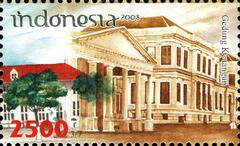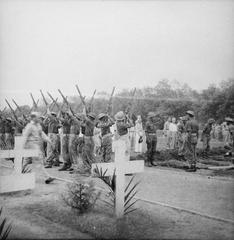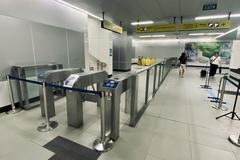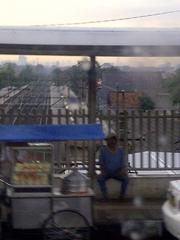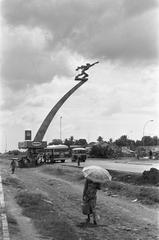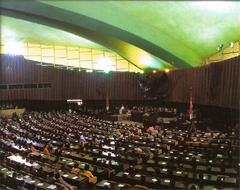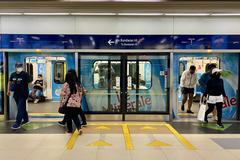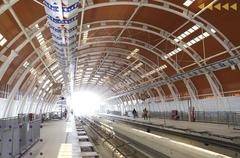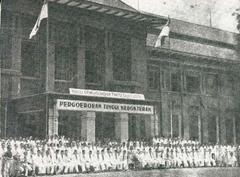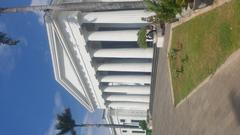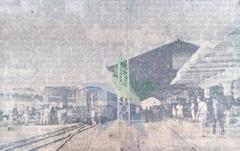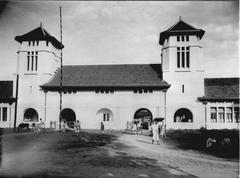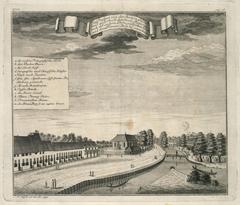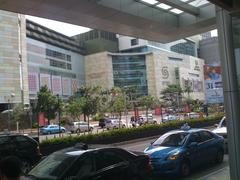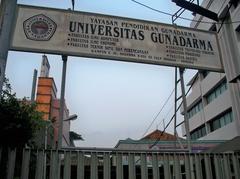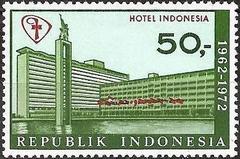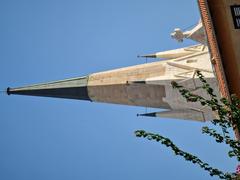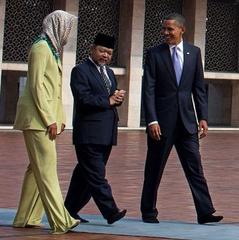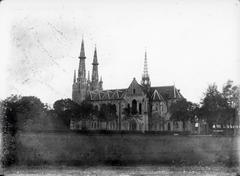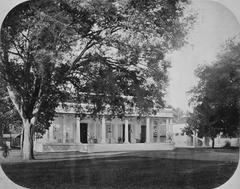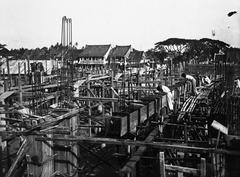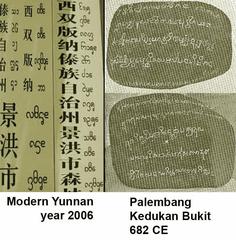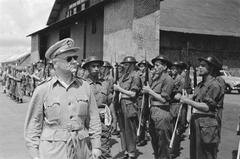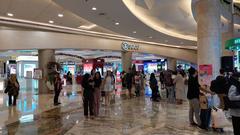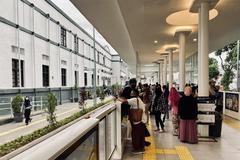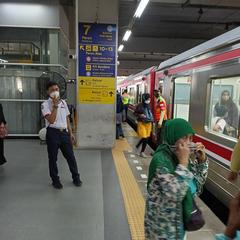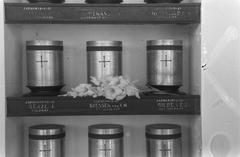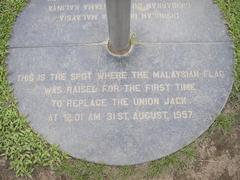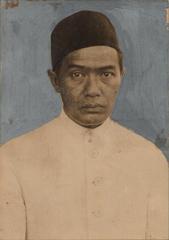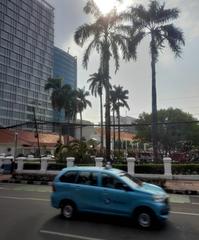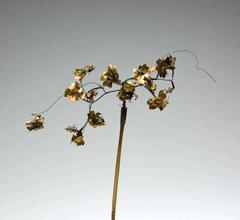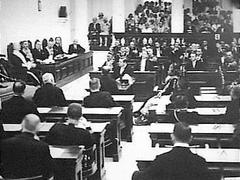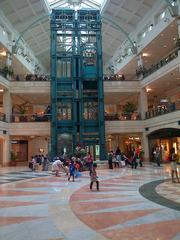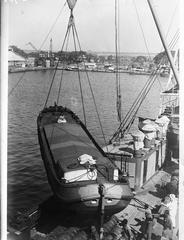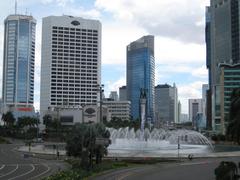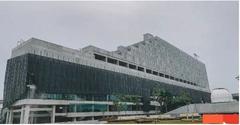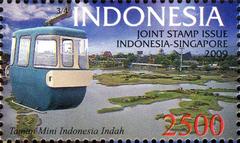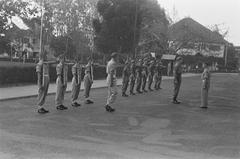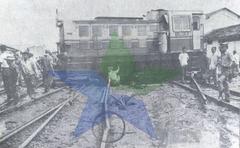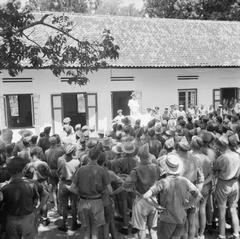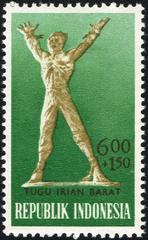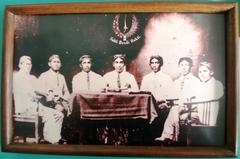Jayakarta Railway Station: Visiting Hours, Tickets, and Comprehensive Travel Guide in Jakarta
Date: 14/06/2025
Introduction
Jayakarta Railway Station, often referred to as Jakarta Kota Station or Beos Station, stands as a testament to Jakarta’s rich historical evolution and its modern-day urban dynamism. Established during the Dutch colonial era, this station remains a pivotal gateway connecting the city’s heritage with its contemporary life. Located in Central Jakarta and serving as an important KRL Commuterline stop, Jayakarta Station not only facilitates efficient transit but also offers travelers direct access to some of Jakarta’s most significant historical and cultural districts—including Kota Tua and Mangga Dua.
This detailed guide provides essential visitor information: operating hours, ticketing procedures, accessibility features, nearby attractions, safety tips, and recommendations for an enriching experience at Jayakarta Railway Station.
Table of Contents
- Colonial Origins and Architectural Heritage
- Role in Jakarta’s Urban and Social Evolution
- Symbol of Jakarta’s Historical Continuity
- Cultural Significance in Contemporary Jakarta
- Visiting Hours and Ticket Information
- Accessibility and Travel Tips
- Nearby Attractions and Recommended Photographic Spots
- Special Events and Guided Tours
- Preservation and Restoration Efforts
- Jayakarta Station in the Context of Jakarta’s Urban Identity
- Safety and Practical Considerations
- Frequently Asked Questions (FAQ)
- Conclusion and Visitor Recommendations
- References and Further Reading
Colonial Origins and Architectural Heritage
Jayakarta Railway Station was originally constructed in 1870 and is recognized as one of Jakarta’s—and Indonesia’s—oldest railway stations (Medium). Its architecture combines Dutch colonial Art Deco and Nieuwe Zakelijkheid (New Objectivity) styles, boasting grand arched roofs, symmetrical façades, and generous windows. The station’s design not only showcased the technological advancements of its era but also signified Batavia’s (now Jakarta) growing urban importance under colonial administration (Jakarta Travel Guide).
Role in Jakarta’s Urban and Social Evolution
Strategically situated near the Ciliwung River and historic Sunda Kelapa port, Jayakarta Station played a vital role in linking the city’s commercial and residential districts (World of History). It became a melting pot for Javanese, Chinese, Arab, Indian, and European communities—reflecting Jakarta’s multicultural roots (Becky Exploring). Today, the station continues serving as a vital node on the KRL Commuter Line, connecting Jakarta’s core with Bogor, Depok, Tangerang, and Bekasi (Jakarta Travel Guide).
Symbol of Jakarta’s Historical Continuity
Throughout its history, the station has undergone various name changes—from Sunda Kelapa, Jayakarta, Batavia, Djakarta, to Jakarta—mirroring the city’s own transformation (OhFact). Its colloquial name, Beos, is derived from the Dutch “Bataviasche Ooster Spoorweg Maatschappij” (Batavia Eastern Railway Company), a nod to its colonial legacy. Despite modernization, Jayakarta Station retains historical elements, making it a tangible connection between Jakarta’s past and present.
Cultural Significance in Contemporary Jakarta
Jayakarta Station anchors the cultural landscape of Kota Tua. Located within walking distance from Fatahillah Square, the Jakarta History Museum, and the Wayang Museum, it is a focal point for heritage tourism (GPSmyCity). The surrounding area is animated by street performers, markets, and colonial architecture, blending Jakarta’s historical narrative with its vibrant daily life (Zafigo).
Visiting Hours and Ticket Information
Jayakarta Railway Station operates daily, typically from 4:00 AM to 10:00 PM, accommodating both early commuters and evening travelers. Ticket purchasing is straightforward, with options including:
- Automated vending machines and staffed counters at the concourse.
- Contactless KRL Commuterline cards for efficient entry and exit.
- Mobile apps such as KRL Access for real-time schedules and ticketing.
Fares start as low as Rp3,000 for short trips and increase according to distance. Visitors are advised to confirm current schedules and fares before traveling, as these may change during holidays or special events (Traveloka).
Accessibility and Travel Tips
The station is designed with inclusivity in mind, offering:
- Ramps and tactile paving for visually impaired travelers.
- Elevators and clear bilingual signage (Bahasa Indonesia and English).
- Barrier-free pathways for wheelchair users and travelers with strollers.
For a smooth visit:
- Avoid peak hours (6:00–9:00 AM and 5:00–8:00 PM) to reduce crowding.
- Use contactless cards or mobile apps for faster ticketing.
- Plan your route in advance using Google Maps or local transit apps.
- Station amenities are basic; for extensive dining or shopping, visit nearby Mangga Dua.
Nearby Attractions and Recommended Photographic Spots
Jayakarta Station is a convenient launch point for exploring:
- Kota Tua (Jakarta Old Town): Colonial architecture, Fatahillah Square, and heritage museums.
- Glodok (Chinatown): Temples, markets, and authentic culinary experiences.
- Mangga Dua Shopping Complex: A retail hub for shopping and local cuisine.
Photography enthusiasts will find the station’s colorful façades (pale yellow and pink panels) and the vibrant activity of nearby districts especially captivating during golden hour or early morning.
Special Events and Guided Tours
While Jayakarta Station itself does not regularly host guided tours, it often serves as a meeting point for heritage walks and cultural events in Kota Tua. Check with local tourism offices, community organizations, or online platforms for upcoming festivals, art exhibitions, and guided historical tours (Medium).
Preservation and Restoration Efforts
Ongoing restoration projects seek to maintain Jayakarta Station’s architectural integrity while upgrading its facilities. Heritage trails and educational signage have been added to enhance visitor appreciation and promote historical awareness (Medium).
Jayakarta Station in the Context of Jakarta’s Urban Identity
Amid Jakarta’s rapid modernization, Jayakarta Railway Station stands as a resilient symbol of the city’s layered history. It represents Jakarta’s ability to blend colonial heritage with present-day urban vibrancy, making it an essential part of the “Big Durian’s” unique character (OhFact).
Safety and Practical Considerations
General Safety:
Jayakarta Station is monitored by security and CCTV. Remain vigilant against petty theft, especially during crowded times (Backindo). Secure valuables and use only official transport apps for onward journeys.
Nighttime Safety:
While the station is generally safe, some nearby neighborhoods may be less secure after dark. Stick to well-lit areas and travel in groups when possible (Holidify).
Health and Hygiene:
Restrooms and handwashing stations are available. Carry hand sanitizer and, during the rainy season, prepare for possible flooding (Travel Like a Boss).
Emergency Contacts:
- Police/General Emergencies: 110 or 112
- Ambulance: 118 or 119
- Firefighter: 113
Frequently Asked Questions (FAQ)
Q: What are the visiting hours of Jayakarta Railway Station?
A: The station typically operates from 4:00 AM to 10:00 PM daily.
Q: How can I purchase tickets?
A: Tickets are available at station counters, automated machines, or via contactless KRL Commuterline cards and mobile apps.
Q: Is Jayakarta Station accessible for people with disabilities?
A: Yes, the station provides ramps, elevators, and barrier-free access.
Q: What attractions are near Jayakarta Station?
A: Kota Tua (Old Town), Glodok Chinatown, and Mangga Dua Shopping Complex are all nearby.
Q: Are there special events or tours at Jayakarta Station?
A: While the station doesn’t host regular events, it is close to Kota Tua, where cultural events and tours are frequently available.
Conclusion and Visitor Recommendations
Jayakarta Railway Station embodies the intersection of Jakarta’s rich colonial heritage and its ongoing urban growth. As both a historical monument and a modern transit hub, it offers travelers efficient connectivity, accessible facilities, and proximity to some of Jakarta’s most celebrated neighborhoods and attractions. Plan your visit by checking current schedules, using contactless ticketing, and exploring the vibrant cultural scene around Kota Tua and Glodok.
For the latest updates, downloadable maps, and personalized travel tips, download the Audiala app and follow us on social media. Embrace Jayakarta Railway Station as your gateway to discovering Jakarta’s unique blend of history, culture, and modernity.
References and Further Reading
- Jayakarta Railway Station: Visiting Hours, Tickets, and Exploring Jakarta’s Historical Gem (Medium)
- Jayakarta Railway Station: Visiting Hours, Tickets, and Guide to Jakarta’s Modern Transit Hub (Traveloka)
- Jayakarta Railway Station: Visiting Hours, Tickets, and Connectivity Guide in Jakarta (Traveloka)
- Jayakarta Railway Station Visiting Hours, Tickets, and Travel Guide to Jakarta’s Historical Sites (The Poor Traveler)
- Jakarta Travel Guide: Jakarta Kota Commuter Station
- Kota Tua Jakarta Colonial Buildings Tour (GPSmyCity)
- History of Jakarta, Indonesia (World of History)
- Interesting Facts About Jakarta (OhFact)
- Jakarta Travel Guide: Things to Know (Zafigo)
- Layover in Jakarta Guide (PS I’m On My Way)
- Safety in Jakarta (Backindo)
- Safety in Jakarta (Holidify)
- Is it Safe to Travel Jakarta Now? (Travel Like a Boss)
- How Safe is Jakarta for Travelers? (Plan and Explore)
- Jakarta Urban Railway Map (Transport for Jakarta)
Image Suggestions:
- High-quality image of Jayakarta Railway Station’s façade at golden hour (alt: “Jayakarta Railway Station facade showcasing Dutch colonial architecture”)
- Map displaying Jayakarta Station in relation to Kota Tua and Glodok (alt: “Map of Jayakarta Railway Station and nearby Jakarta historical sites”)
- Photo of Fatahillah Square with street performers (alt: “Cultural event near Jayakarta Railway Station in Kota Tua”)
Internal Links:
